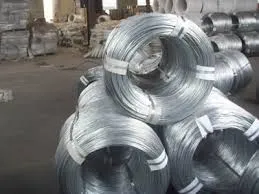high tensile barbed wire installation
High Tensile Barbed Wire Installation A Comprehensive Guide
High tensile barbed wire is an effective fencing solution widely used for various applications, including agricultural, commercial, and industrial settings. Its durability and strength make it an ideal choice for securing properties, livestock areas, and even as a deterrent against intruders. This article serves as a guide to the installation of high tensile barbed wire, ensuring that your fencing project is executed with precision and durability.
Materials Needed
Before beginning the installation, gather all necessary materials and tools
1. High Tensile Barbed Wire Available in various gauges; choose based on your needs. 2. Fence Posts Wooden, metal, or vinyl posts, depending on the terrain and aesthetic preferences. 3. Wire Strainers For tightening the wire effectively. 4. Staples and Clips To secure the wire to the posts. 5. Gate Hinges and Latches If incorporating gates into your fencing. 6. Tools Post hole digger, hammer, wire cutters, tensioning tool, and measuring tape.
Steps for Installation
1. Planning and Measuring Begin by assessing the area where the barbed wire will be installed. Measure the perimeter and determine the placement of the fence posts. Generally, posts should be spaced about 8 to 10 feet apart, depending on the terrain and type of livestock.
2. Setting the Fence Posts Use a post hole digger to create holes for your fence posts, ensuring they are deep enough to provide adequate support. A depth of at least one-third the length of the post is recommended. Place the posts in the holes and fill them with concrete or compacted soil for stability.
high tensile barbed wire installation

3. Attaching the High Tensile Barbed Wire Once the posts are set, it’s time to begin installing the barbed wire. Start at one end and unroll the wire along the line of posts. Secure the wire to the end post using staples or clips.
4. Tensioning the Wire To achieve optimal strength, the wire must be tensioned properly. Use wire strainers to pull the wire taut between the posts. This step is crucial as it prevents sagging and enhances the fence's durability. It may be necessary to periodically check the tension during the installation process.
5. Securing the Wire After tensioning, secure the wire to each post with staples or clips, ensuring that the barbs are facing outward. This configuration deters animals and intruders effectively. Additional strands of barbed wire can be added based on your security requirements.
6. Finishing Touches If your installation includes a gate, ensure that the gate hinges and latches are properly installed. Finally, inspect the entire fence line for any weak spots or areas that need reinforcing.
Maintenance Tips
Once your high tensile barbed wire fence is installed, maintaining it is essential for longevity and effectiveness. Regularly check for any signs of wear or damage, and repair any broken wires or posts promptly. Keep vegetation clear from the fence line to prevent it from obstructing the barbed wire.
Conclusion
Installing high tensile barbed wire fencing is a detailed process that requires careful planning and execution. By following this guide, you can create a robust fencing solution that meets your security needs. Remember, proper installation and regular maintenance are key to ensuring the longevity of your high tensile barbed wire fence, providing you with peace of mind for years to come.
-
Innovations in Razor Barbed Wire Design TechnologyNewsAug.11,2025
-
Roofing Nail Compatibility with Different Metal Roof TypesNewsAug.11,2025
-
Welded Wire Mesh for Rockfall Protection BarriersNewsAug.11,2025
-
Galvanized Wire Corrosion Resistance TestingNewsAug.11,2025
-
3D Fence Solutions Preventing Bird CollisionsNewsAug.11,2025
-
Using Chain Link Fence for Urban Garden SupportNewsAug.11,2025




